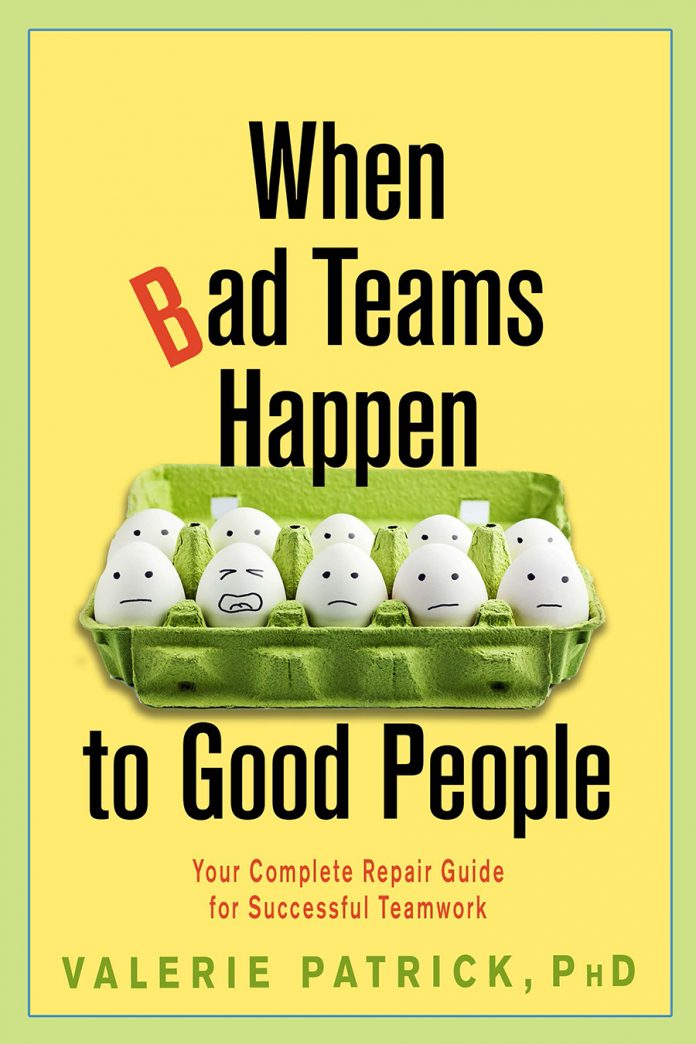
Team climate, the environment that team members experience in meetings, is inviting or uninviting just like a room is inviting or uninviting. Team climate is made up of different components like a room’s climate is made up of different components. For example, I am sensitive to temperature in determining room comfort, whereas my husband is sensitive to the type of furniture in the room. In fact, my husband would say that my comfort zone for temperature is impossibly narrow. For teams, I am sensitive to how a team leader behaves in determining comfort, whereas my husband is sensitive to how floor time is distributed. My husband is a professor, so he expects adequate floor time whether he is in the office or at home.
Team climate can drive efficiency and effectiveness in team meetings or be a barrier to group performance. I am far more productive working in an air-conditioned office on a hot and sticky summer day than working outside where all I can think about is the beads of sweat coalescing all over my body. Similarly, a team that practices constructive debate of issues will perform better than a team whose disagreements escalate to personal conflicts that make emotions run high.
The team leader tends to have a disproportionate influence on team climate because the leader initiates and shapes the climate at every meeting. But team climate is the sum total of individual team member behaviors even though the leader has a big influence. The host of a party can ask you to take off your shoes at the front door, and you can decide to have a good time anyway or sulk because you don’t get to show off your new shoes. A team leader can shoot down your idea for no good reason, and you can decide to stay engaged anyway or withdraw from the meeting. Not all leader and member behaviors are created equal though. Leader and member behaviors can galvanize engagement by others or can discourage engagement by others. A good team climate is characterized by equal participation across members on average (Wooley et al., 2015).
Equal participation across team members is easier said than done. If you have equal participation, then you have succeeded in all members feeling comfortable enough to contribute to the team task at hand. But different people have different preferences when it comes to the team climate that promotes their best work and involvement in a meeting. It is not enough for a team leader or a member to pay attention to the climate elements that make them feel comfortable to participate in a team. A leader and members need to be aware of the symptoms that team climate problems exist for other members.
Symptoms of Team Climate Problems
Team climate problems occur when the environment of a team meeting gets in the way of a member’s participation. I have experienced many team climate problems over the course of my corporate career. For example, while at a premier global chemicals and life sciences company, I remember being invited to a meeting of research and development (R&D) managers with the global head of R&D from Europe. The meeting objective was for the R&D managers to understand how our work supported the global R&D strategy. I thought it was important to understand everything the global head of R&D said because he did not travel to the United States very often, so I took copious notes. My method to understand what someone is saying to me is to take notes—“from the hand to the mind” as the saying goes. But midsentence, the global head of R&D looked directly at me and asked why I was taking notes. I explained that this was my way of processing what he was saying. He said that what he was saying was company confidential and was not to be shared outside of the room. I assured him that I was using a personal notebook for my use only. The damage had been done, however; I sensed his mistrust and stopped taking notes as my will to understand his message evaporated. So the things we say and do in a group can impact the ability of others to stay engaged and be productive.
One symptom of a team climate problem is nonproductive conflict, which can take different forms. One form of nonproductive conflict is a personal conflict between team members, which researchers have shown is damaging to creativity and problem solving (Isaksen & Ekvall, 2015). Another form is passive-aggressive behavior, which researchers have shown can lead to a downward escalator spiral of negative emotion between two people (Weingart et al., 2014). This is like sitting in a hot room next to a window channeling the sun onto your already sweaty face. Passive-aggressive behavior is an indirect conflict like pretending to pay attention to someone you are angry with or agreeing to an action you have no intention of completing. Many people are good at picking up on passive-aggressive behavior and will call the other person out on their behavior. The person with passive aggression will deny the accusation, which will make the accuser more angry and frustrated. The increasing spiral of negative emotion triggered by passive-aggressive behavior will not produce a productive outcome. Moderate and high levels of negative emotion are also damaging to creativity and problem solving (Kahneman, 2011).
Whereas nonproductive conflict is a symptom of a team climate problem, some types of conflict enhance team performance. For example, idea debate has been found to correlate with a team’s creativity and ability to innovate. Also, correcting another team member’s mistake in the spirit of learning and improving is also important to creativity in teams (Sawyer, 2013).
High creativity and effective problem-solving are the hallmarks of a high-performing team but the first to go when team climate, often overlooked, is a problem. When Bad Teams Happen to Good People has an entire chapter devoted to detecting and addressing team climate problems.
Resources
- Anita Williams Woolley, Ishani Aggarwal, and Thomas W. Malone. “Collective Intelligence and Group Performance.” Current Directions in Psychological Science 24:6 (2015): 420–24.
- Scott G. Isaksen and Goran Ekvall. “Conceptual and Historical Foundations of the Situational Outlook Questionnaire: A Technical Resource for the SOQ,” 2nd ed. (Creative Problem Solving Group, Inc., 2015), 65. https://soqonline.azurewebsites.net/media/1060/conceptual-historical-foundations-soq.pdf.
- Laurie R. Weingart, Kristin Behfar, Corinne Bendersky, Gergana Todorova, and Karen A. Jehn. “The Directness and Oppositional Intensity of Conflict Expression.” Academy of Management Review 40:2 (April 2014): 72 pages.
- Daniel Kahneman. Thinking Fast and Slow (New York: Farrar, Straus and Giroux, 2011).
- Keith Sawyer. Zig Zag: The Surprising Path to Greater Creativity (New York: Jossey-Bass, 2013).
Adapted, and reprinted with permission from Career Press, an imprint of Red Wheel/Weiser LLC, When Bad Teams Happen to Good People by Valerie Patrick, Ph.D. is available wherever books and ebooks are sold or directly from the publisher at www.redwheelweiser.com or 800–423–7087.




